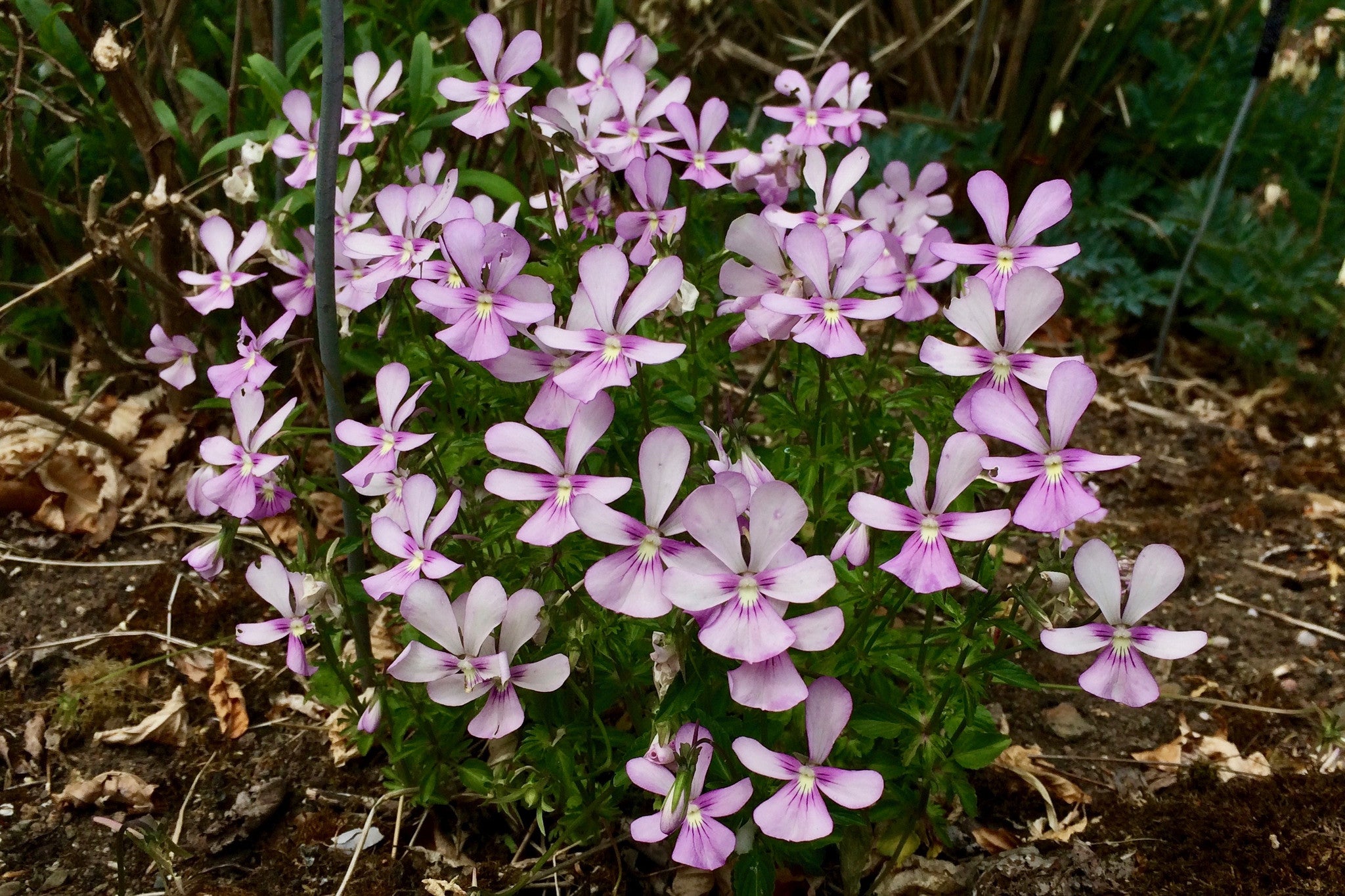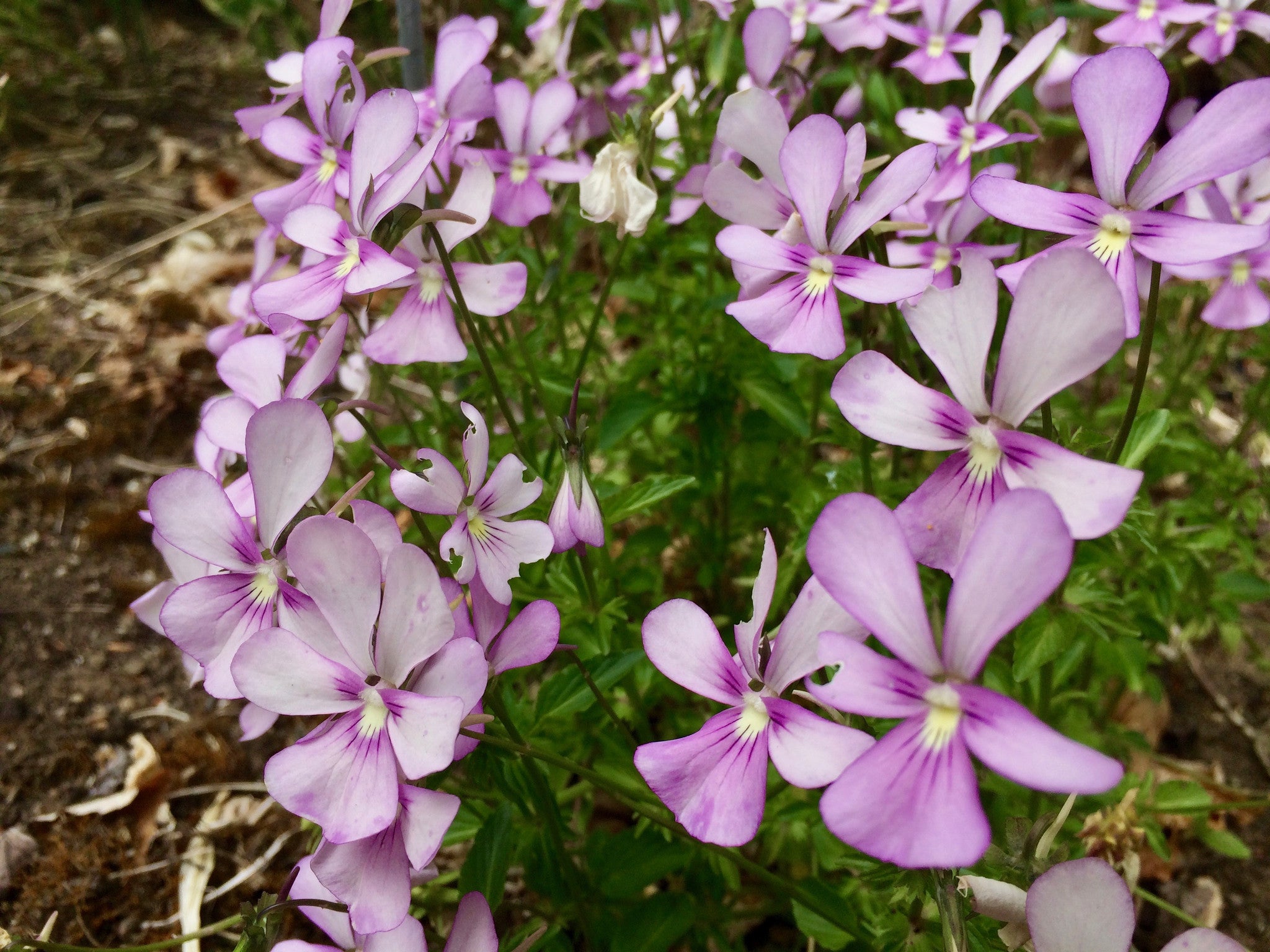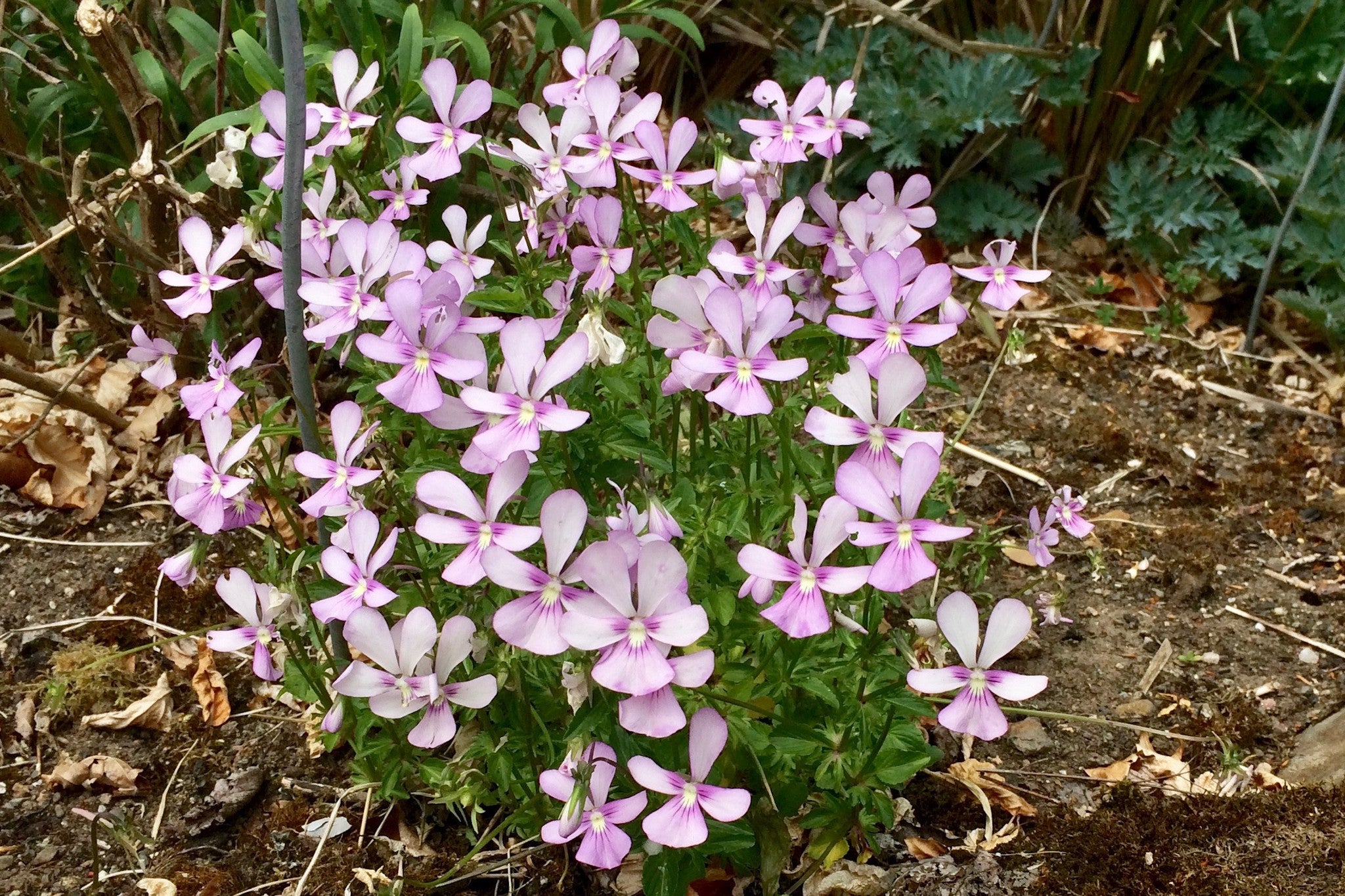Viola cornuta 'Victoria's Blush' (C)
Approx. 0.5 litre pot
About this cultivar:
Viola cornuta 'Victoria's Blush' (C) provides lots and lots of slim pale pink flowers on elegant stems above spreading mats of leaves. More clump forming than other Violas.- Position: Full sun, partial shade
- Soil: Almost any soil, grows well in Ballyrobert
- Flowers: April, May, June, July, August, September
- Other features: Grows well in Ballyrobert, Great Ground Cover
- Hardiness: Fully hardy, grows well in Ballyrobert
- Habit: Mat forming, Clump forming
- Foliage: Evergreen
- Height: 10 - 20 cm (0.3 - 0.6 ft)
- Spread: 15 - 25 cm (0.5 - 0.8 ft)
- Time to full growth: 2 to 5 years
- Plant type: Herbaceous Perennial
- Colour: Green, pink, purple
- Goes well with: --
About this genus:
Viola (vi-o-la) is a genus of flowering plants in the violet family (Violaceae). It is the largest genus in the family, containing between 525 and 600 species. Most species are found in the temperate Northern Hemisphere, however some are also found in widely divergent areas such as Hawaii, Australasia, and the Andes.
Some Viola species are perennial plants, some are annual plants, and a few are small shrubs. In horticulture the term "pansy" is normally used for those multi-coloured, large-flowered cultivars which are raised annually or biennially from seed and used extensively in bedding. The terms "viola" and "violet" are normally reserved for small-flowered annuals or perennials, including the species. All of ours are the perennial 'viola' types!
One quirk of some Viola is the elusive scent of their flowers; a major component of the scent is a ketone compound called ionone, which temporarily desensitises the receptors of the nose, thus preventing any further scent being detected from the flower until the nerves recover! Nose-numbers! The essence is often used in the perfume industry. It also flavours the liqueurs Creme Yvette, Creme de Violette, and Parfait d'Amour. It is also used in Parma Violets confectionery.
There are hundreds of perennial viola and violetta cultivars; and, like of our other genus, many of these do not breed true from seed and therefore have to be propagated from cuttings. Violettas can be distinguished from violas by the lack of ray markings on their petals.
Flower colours vary in the genus, ranging from violet (obviously!), through various shades of blue, yellow, white, and cream, whilst some types are bicolored, often blue and yellow. Flowering is often profuse, and may last for much of the spring and summer. When newly opened, Viola flowers may be used to decorate salads or in stuffings for poultry or fish. Soufflés, cream, and similar desserts can be flavoured with Viola flowers. The young leaves are edible raw or cooked as a somewhat bland leaf vegetable.
But we mostly grow our Violas for their beauty! Long flowering, tough, and tolerant of a wide range of garden situations and soils- Violas should be in every garden.






